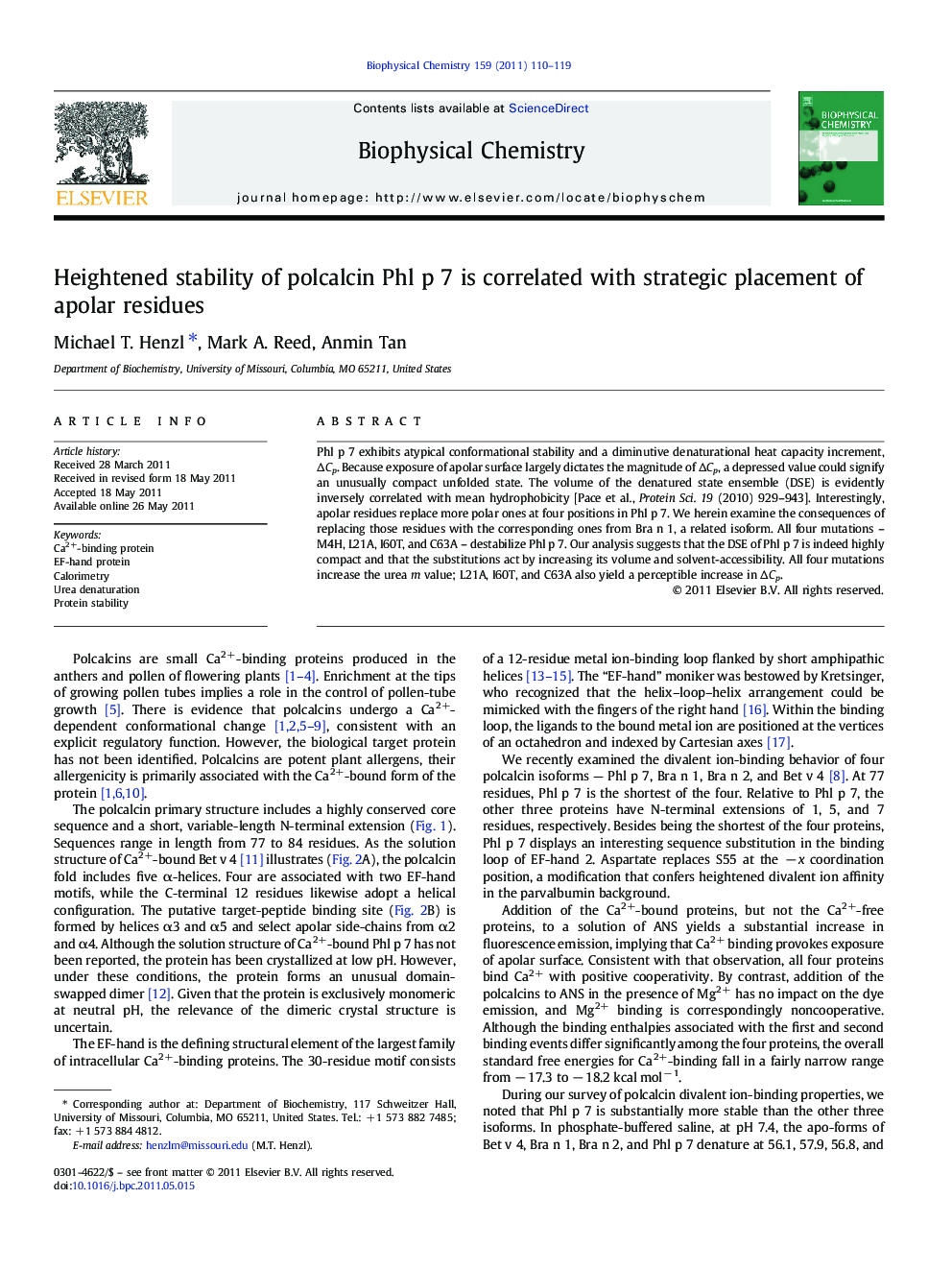| Article ID | Journal | Published Year | Pages | File Type |
|---|---|---|---|---|
| 5371400 | Biophysical Chemistry | 2011 | 10 Pages |
Phl p 7 exhibits atypical conformational stability and a diminutive denaturational heat capacity increment, ÎCp. Because exposure of apolar surface largely dictates the magnitude of ÎCp, a depressed value could signify an unusually compact unfolded state. The volume of the denatured state ensemble (DSE) is evidently inversely correlated with mean hydrophobicity [Pace et al., Protein Sci. 19 (2010) 929-943]. Interestingly, apolar residues replace more polar ones at four positions in Phl p 7. We herein examine the consequences of replacing those residues with the corresponding ones from Bra n 1, a related isoform. All four mutations - M4H, L21A, I60T, and C63A - destabilize Phl p 7. Our analysis suggests that the DSE of Phl p 7 is indeed highly compact and that the substitutions act by increasing its volume and solvent-accessibility. All four mutations increase the urea m value; L21A, I60T, and C63A also yield a perceptible increase in ÎCp.
Graphical abstractDownload full-size imageResearch highlights⺠Phl p 7 exhibits heightened conformational stability. ⺠Diminutive ÎCp and m-value suggest that Phl p 7 adopts a compact unfolded state. ⺠Reversal of four polar â apolar substitutions in Phl p 7 decreases stability. ⺠Reversal of the substitutions also increases ÎCp and the m-value. ⺠Phl p 7 stability evidently derives from strategic polar â apolar substitutions.
